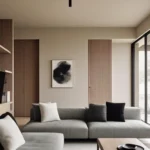Japandi design is more than a trend—it’s a lifestyle rooted in harmony, simplicity, and intentional living. Blending Japanese minimalism with Scandinavian coziness, Japandi interiors rely on thoughtful lighting to set the tone. Lighting is not just functional in this style—it’s emotional. It creates warmth, calmness, and visual serenity. In this guide, we’ll uncover the key lighting tips to help you master Japandi-style lighting and create a home that feels balanced, bright, and beautiful.
Key Takeaways: Japandi Lighting Ideas to Instantly Elevate Your Home
-
Prioritize Natural Light – Japandi interiors thrive on soft, filtered sunlight to create warmth and serenity.
-
Go Minimal with Fixtures – Choose clean, simple lighting designs with natural materials like wood, paper, or linen.
-
Warm White Bulbs Only – Avoid harsh lighting; stick to warm tones (2700K–3000K) to maintain a calm ambiance.
-
Layer Your Lighting – Use a mix of ambient, task, and accent lights to add depth without clutter.
-
Highlight Textures & Shadows – Use directional lighting to accent wood grains, woven textures, and architectural lines.
-
Stick to Neutral Tones – Black, white, beige, and soft grey are ideal for lighting finishes and shades.
-
Less Is More – One statement pendant or floor lamp can speak volumes—avoid over-lighting.
-
Harmony with Nature – Choose fixtures inspired by Japanese or Scandinavian design principles: simple, organic, functional.
-
Smart & Sustainable – Consider dimmable LEDs or smart lighting to balance mood and energy efficiency.
-
Consistency is Key – Ensure lighting style matches the rest of your Japandi decor for seamless cohesion.
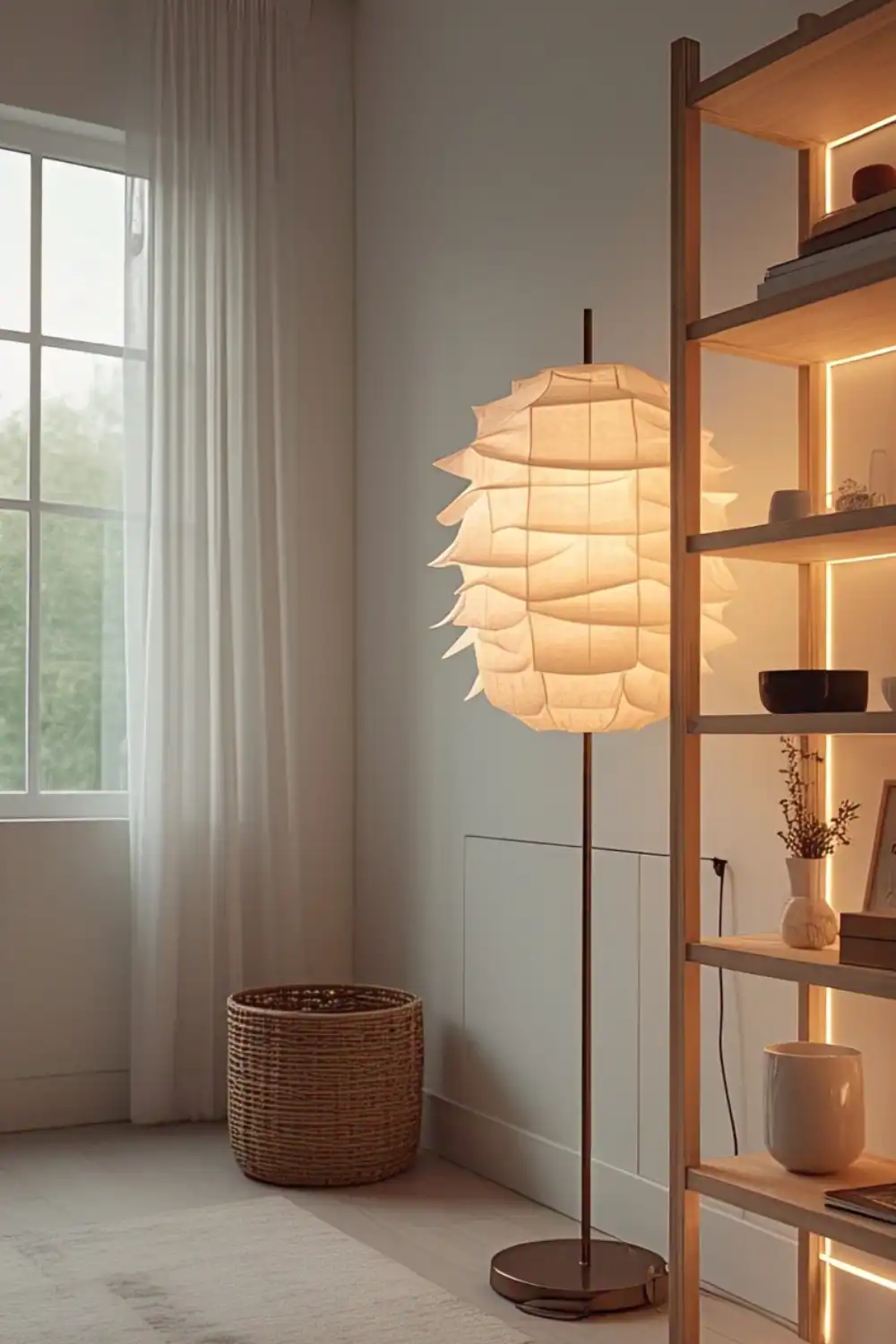
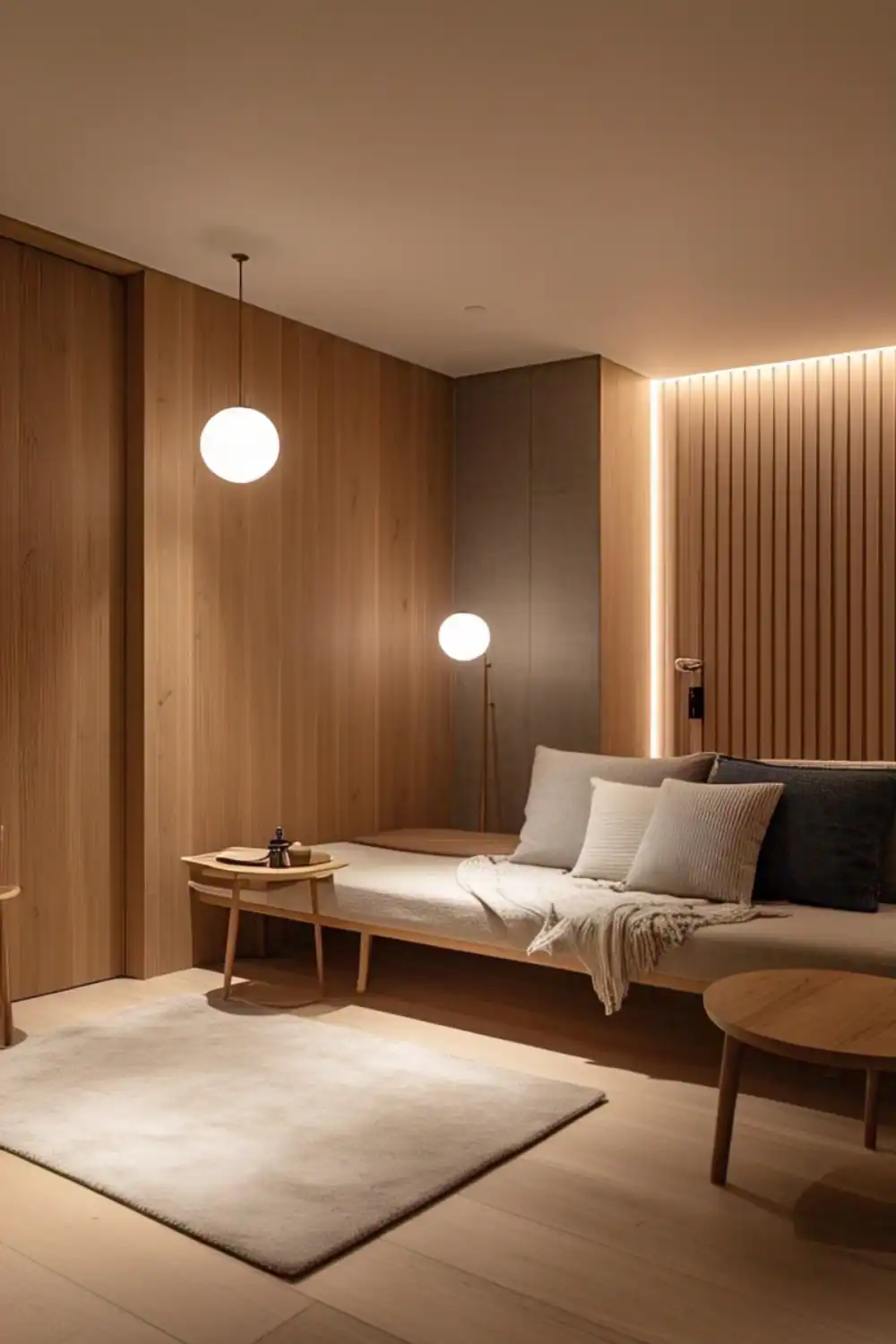
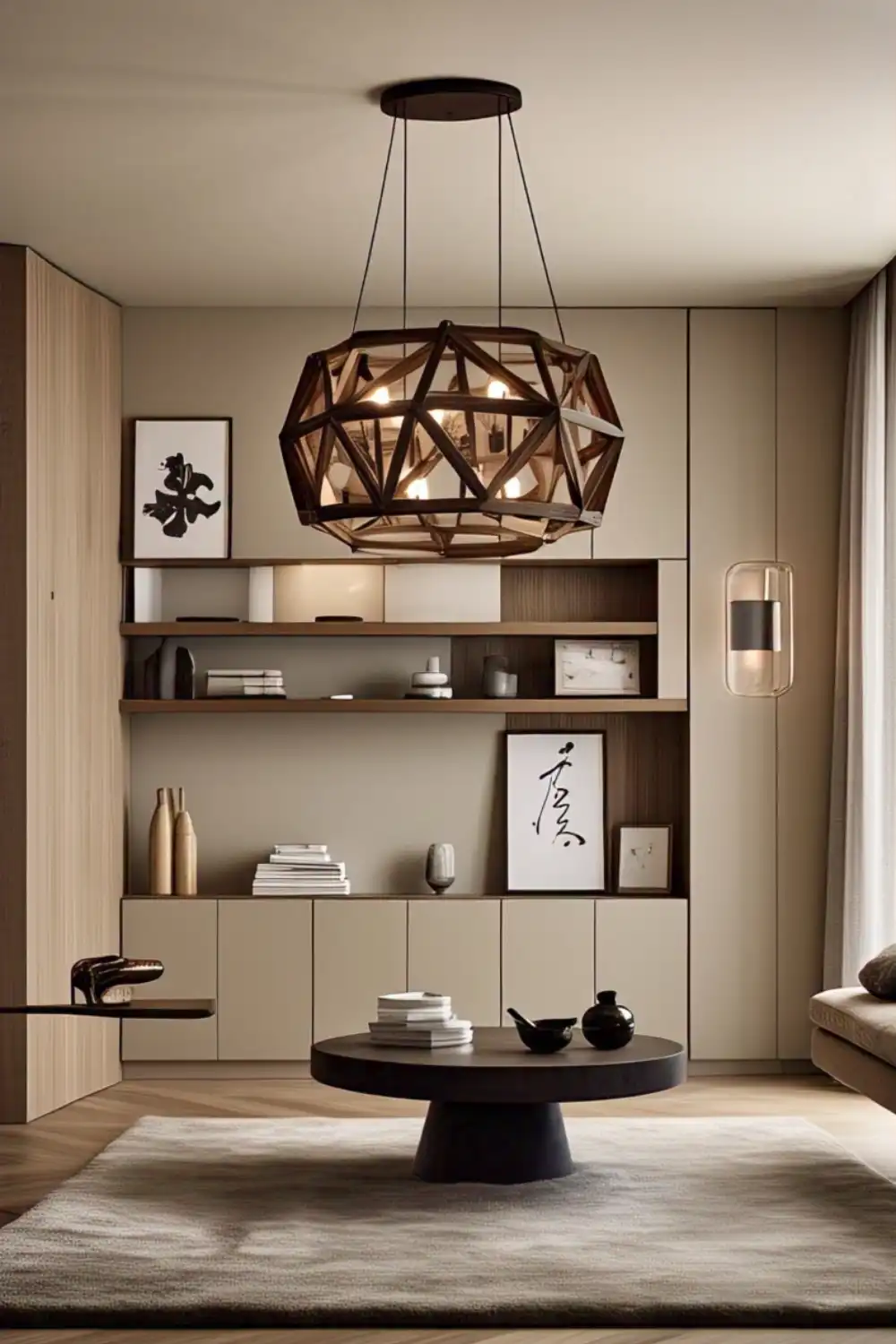
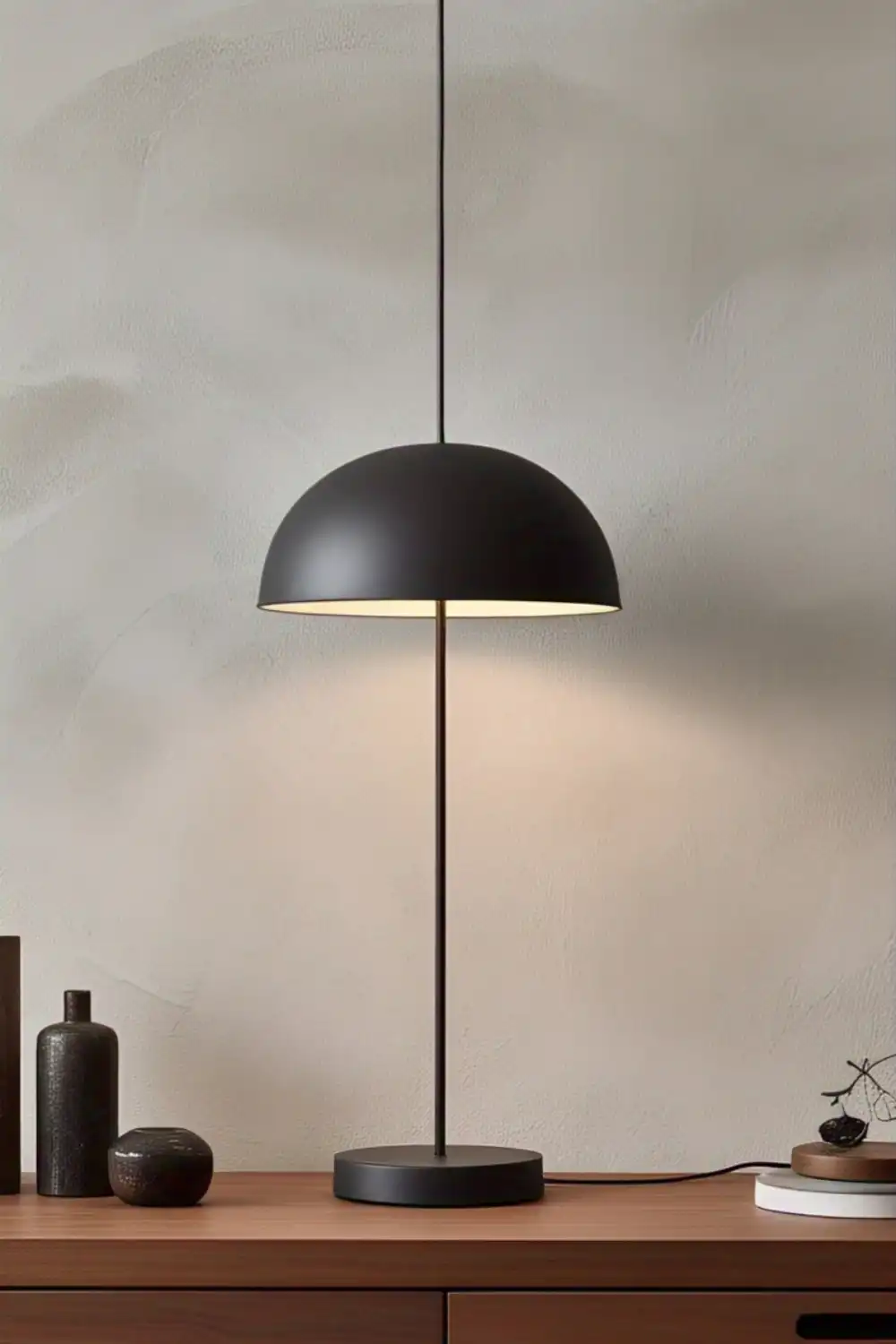
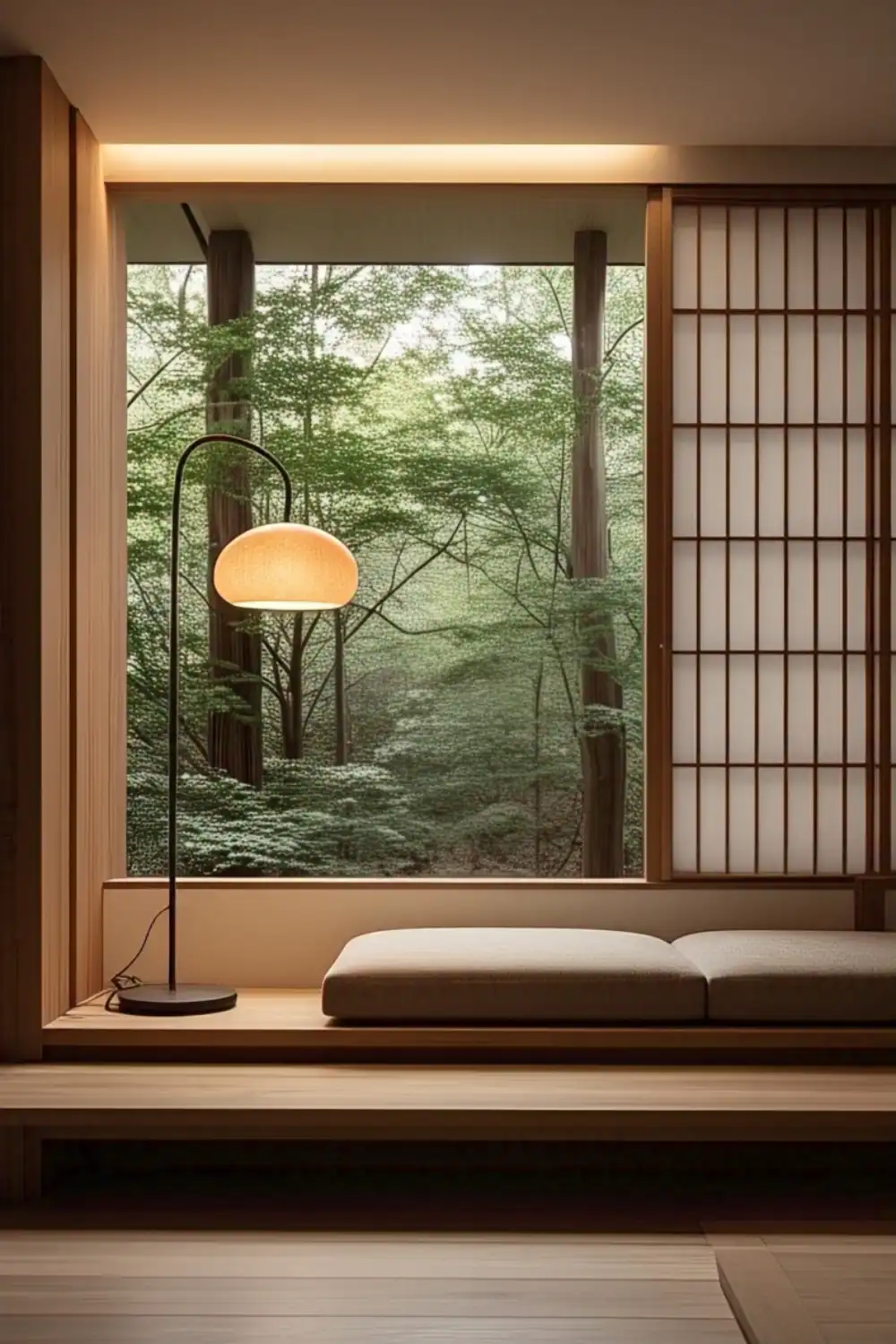
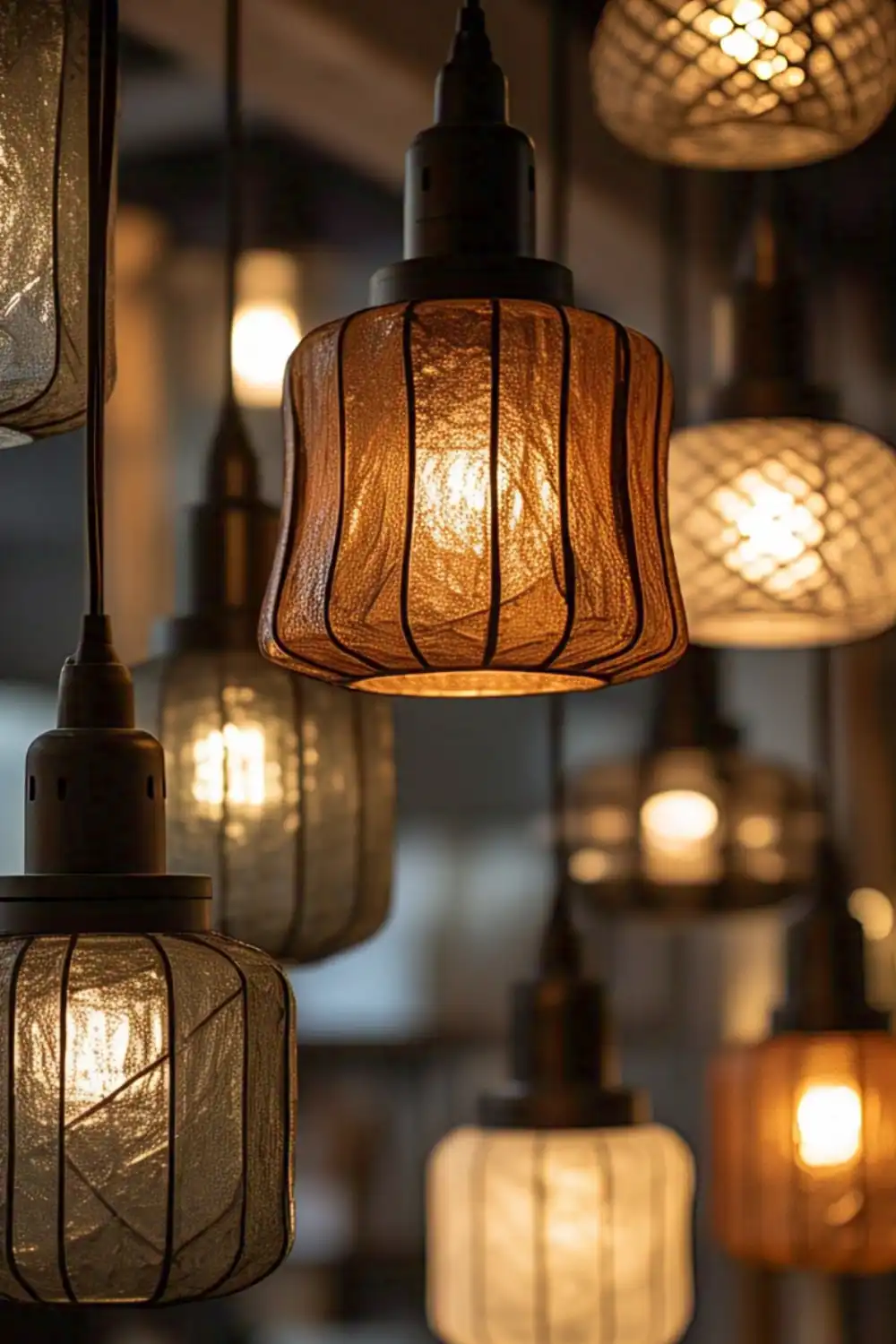

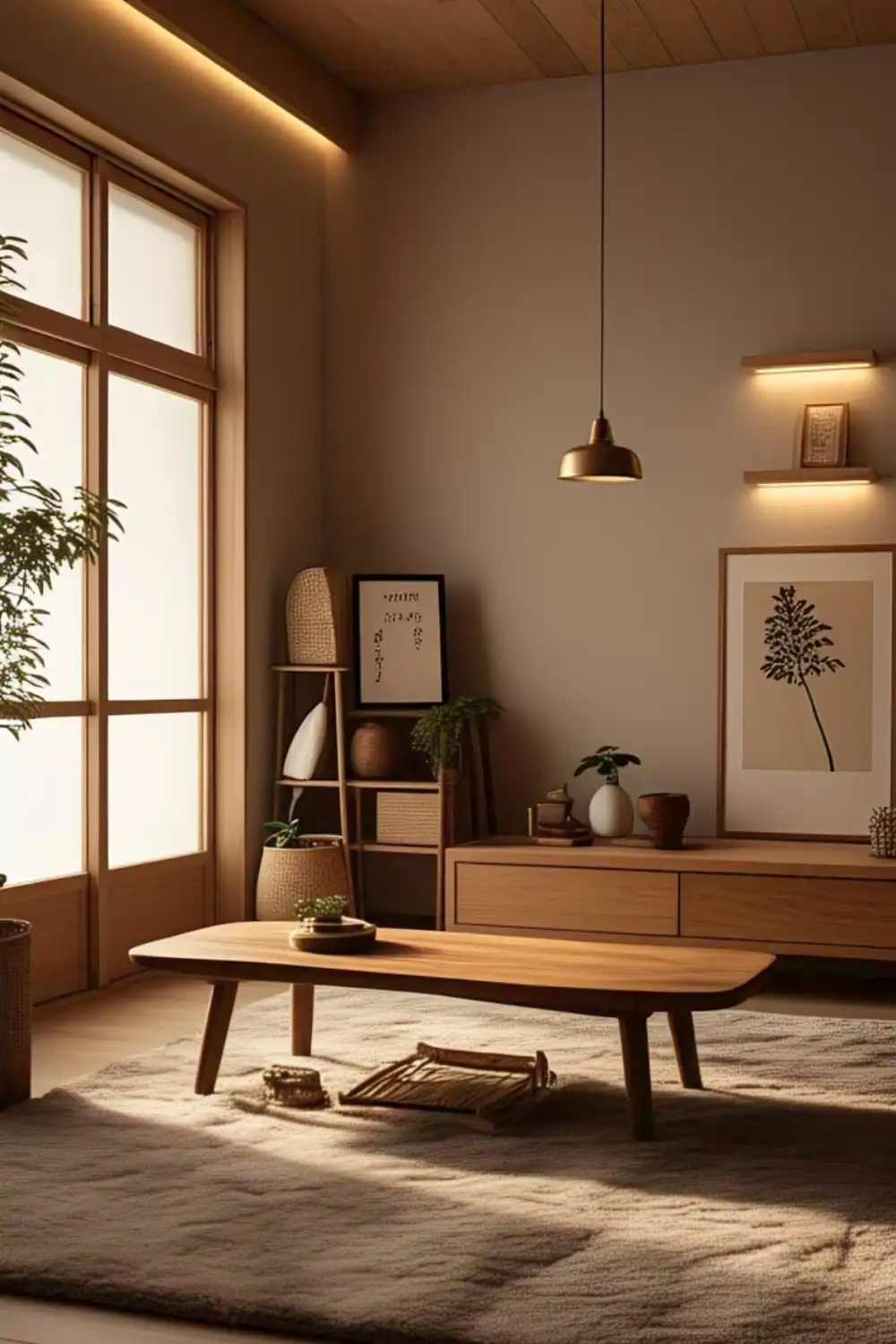

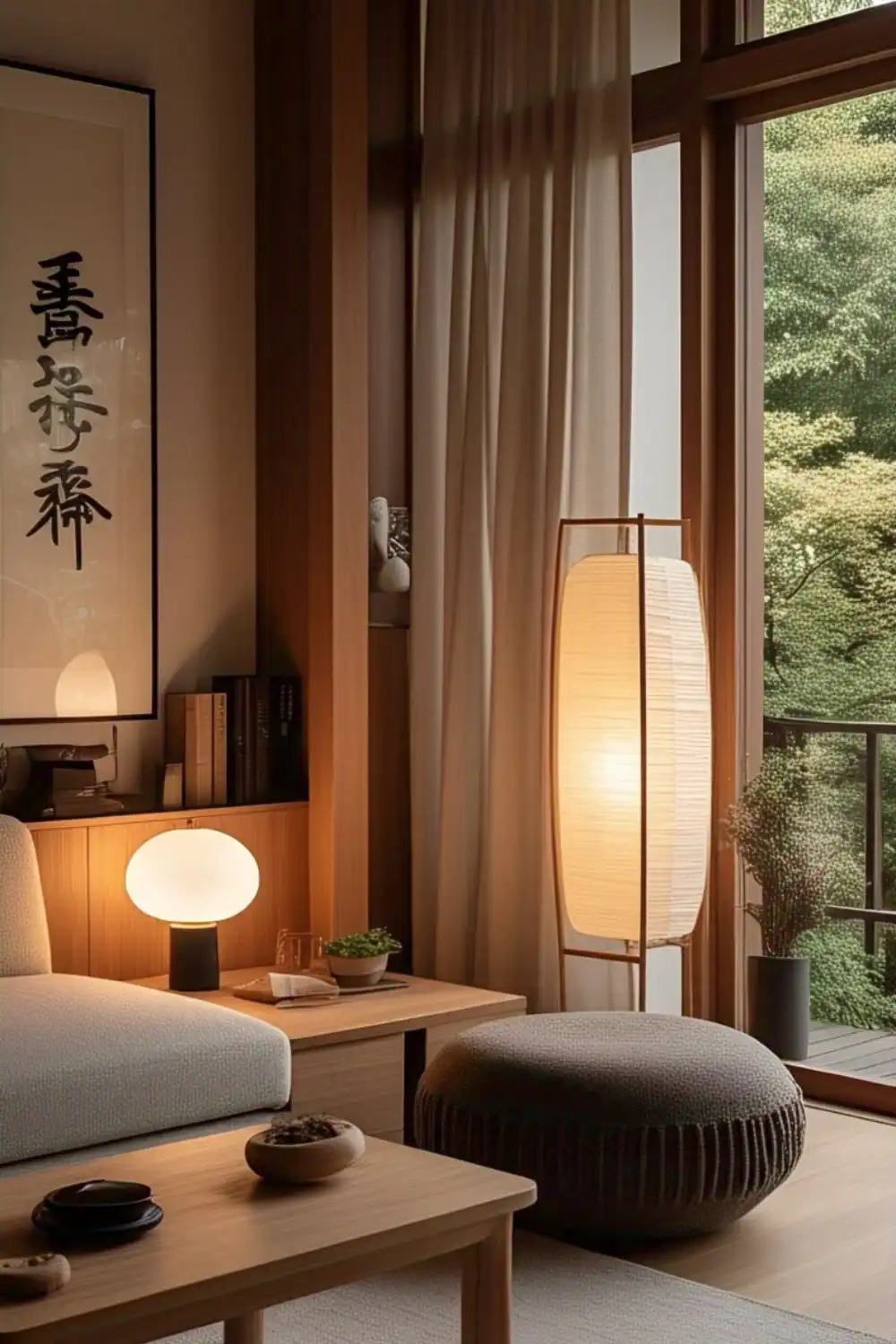
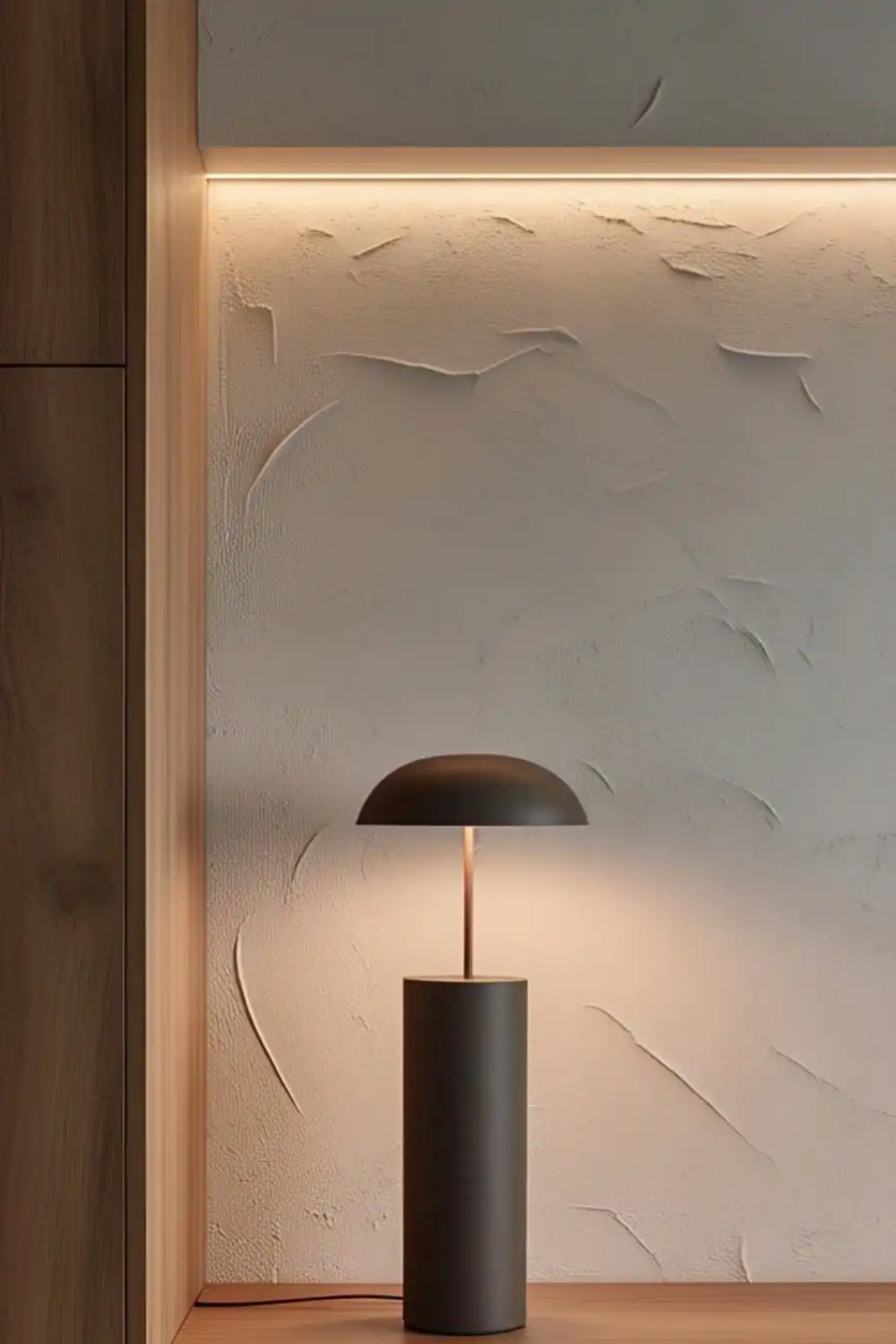
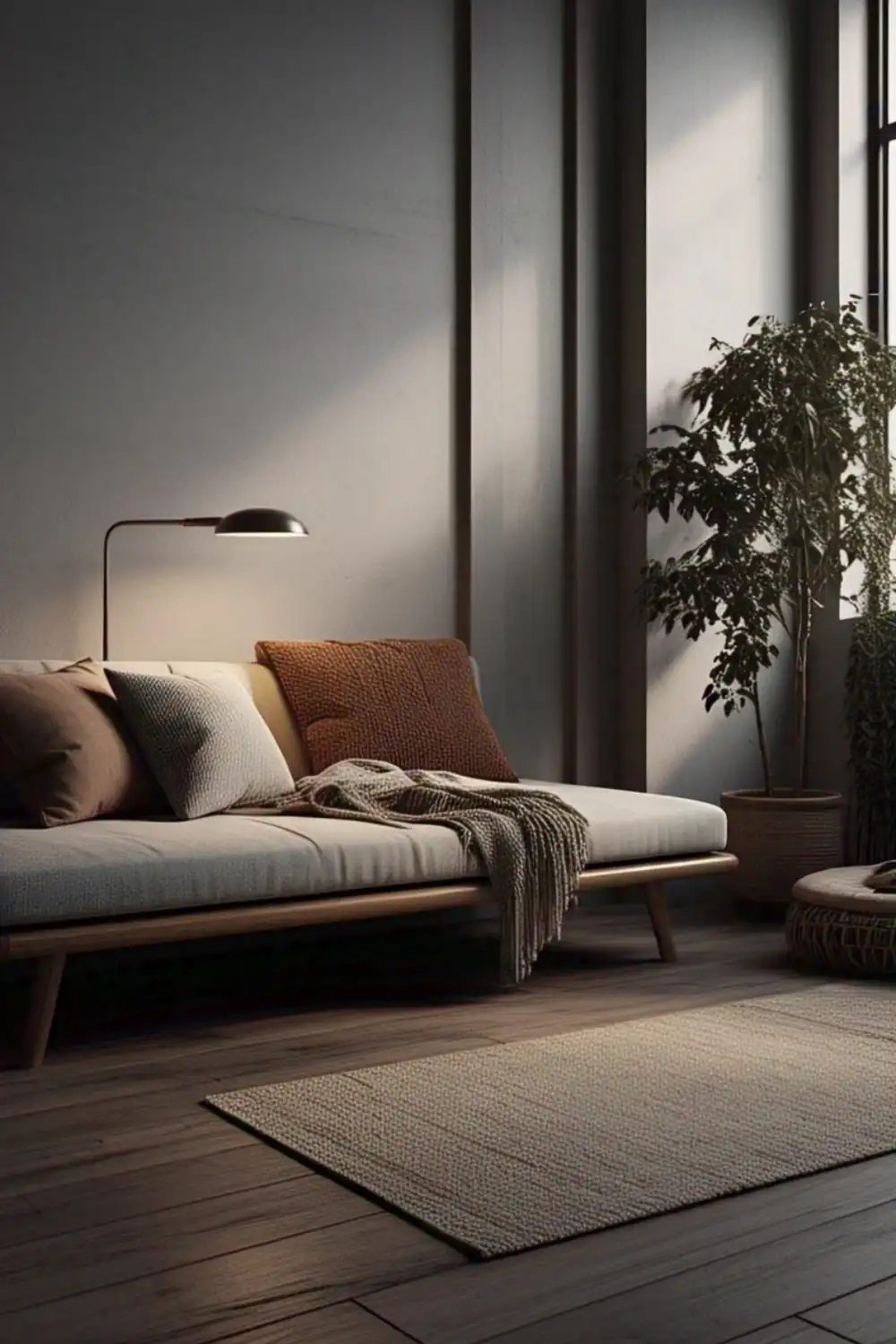
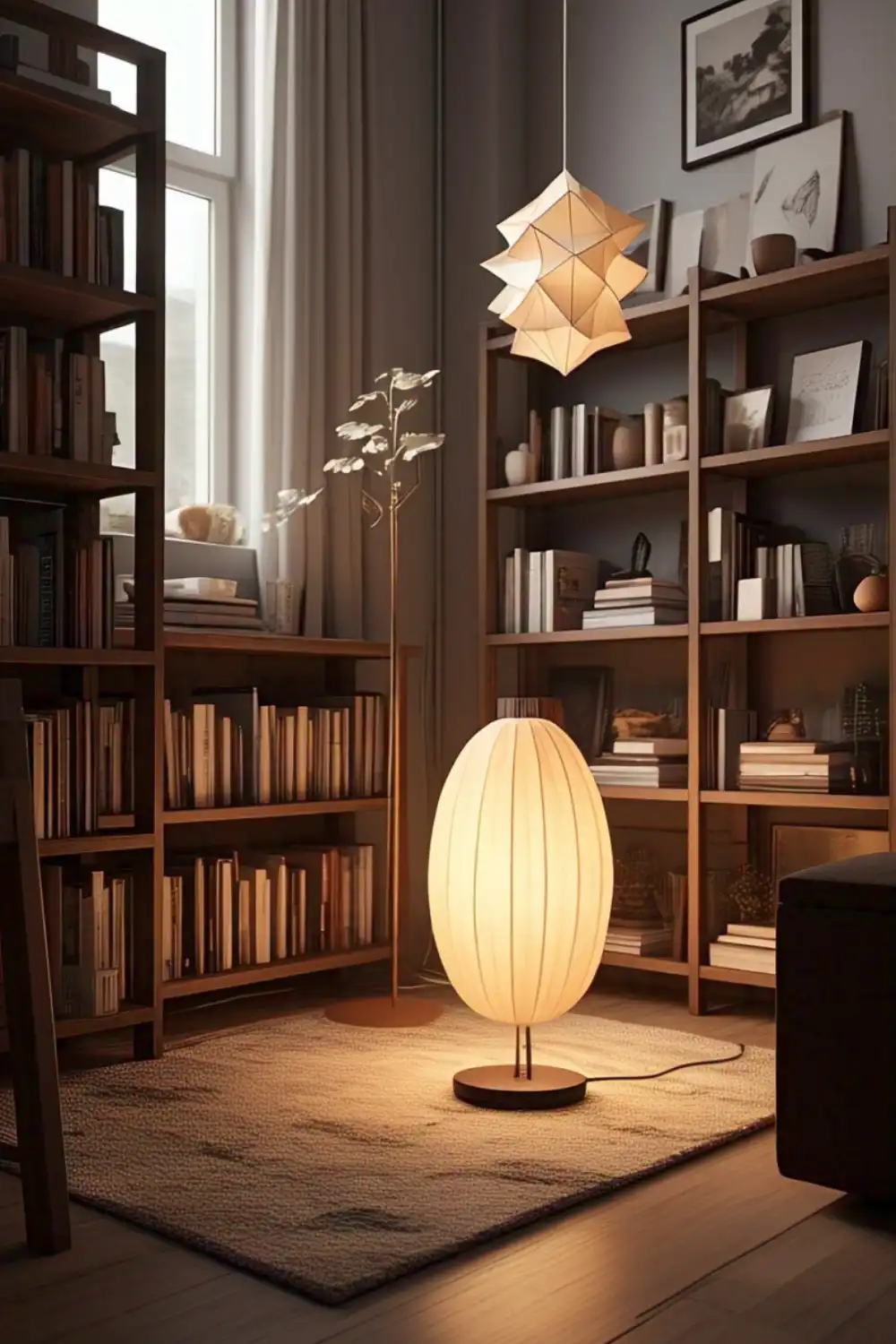
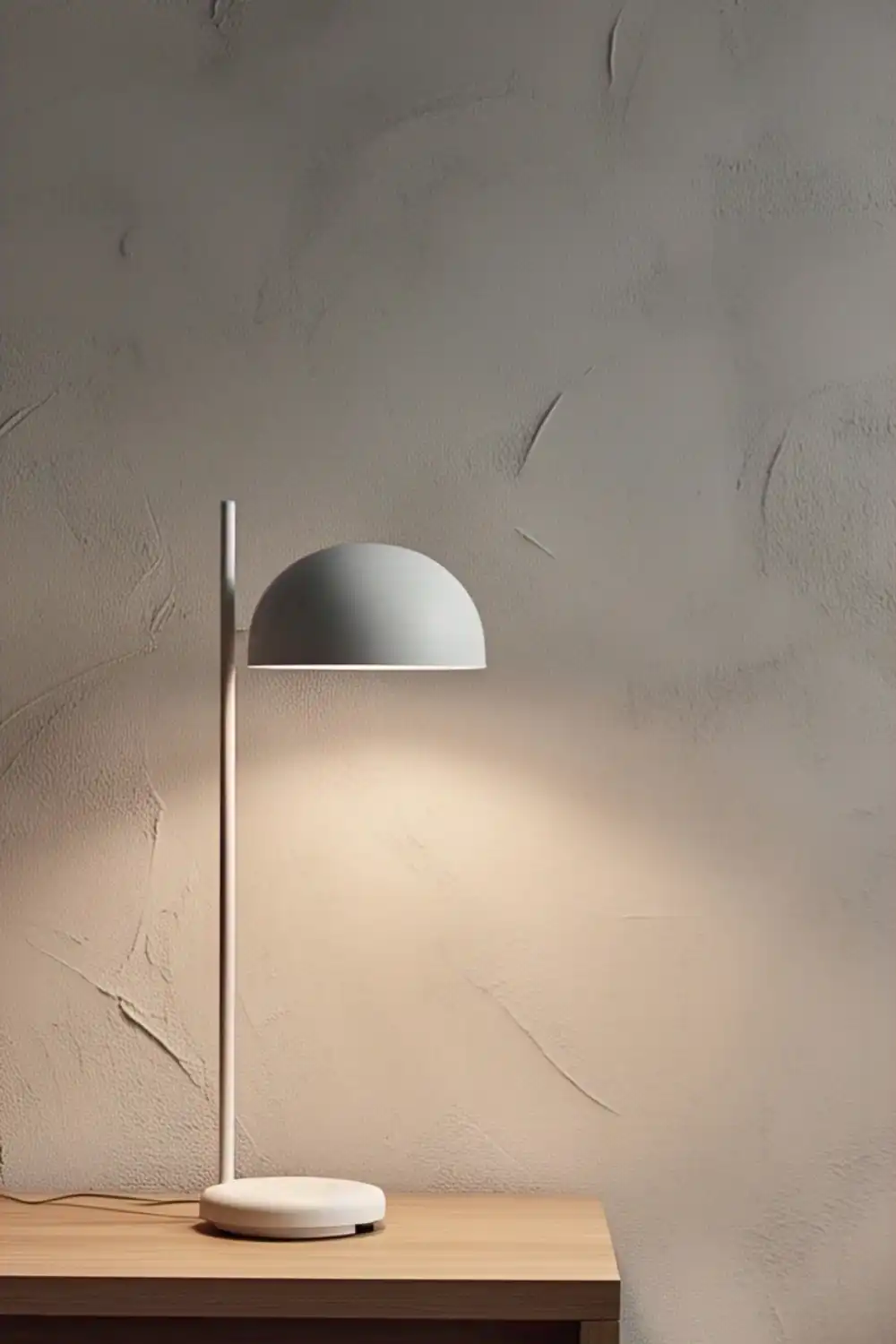
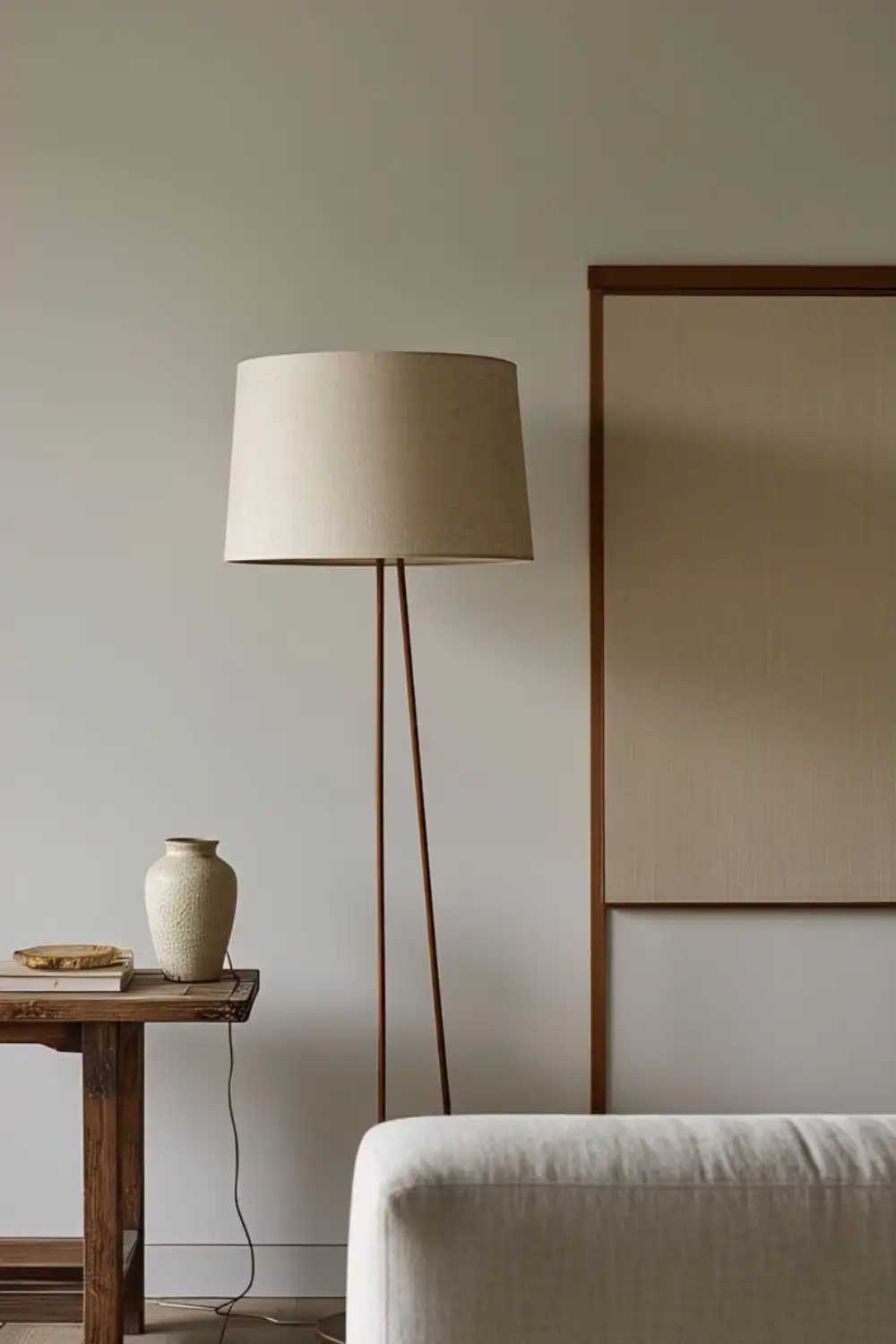
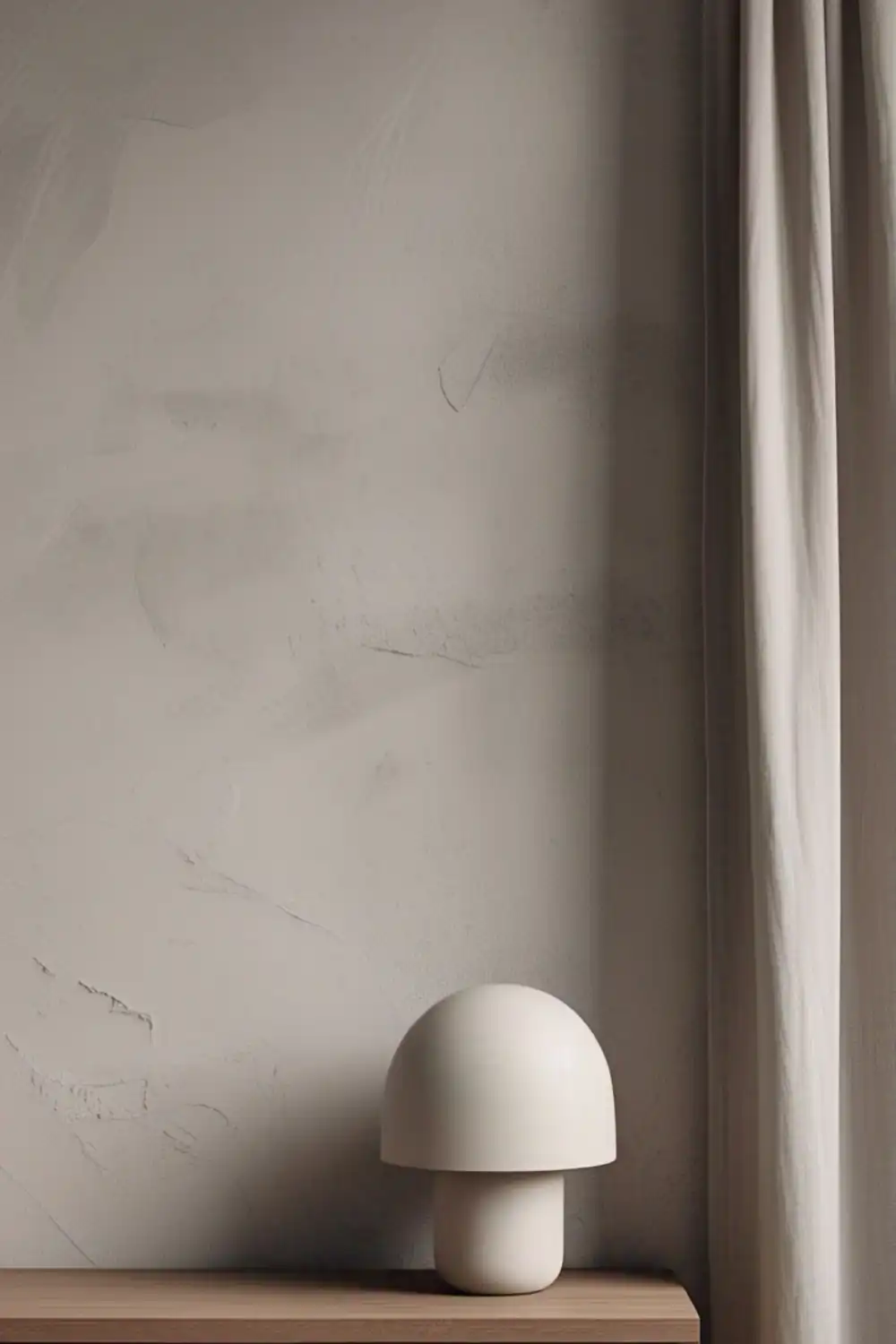
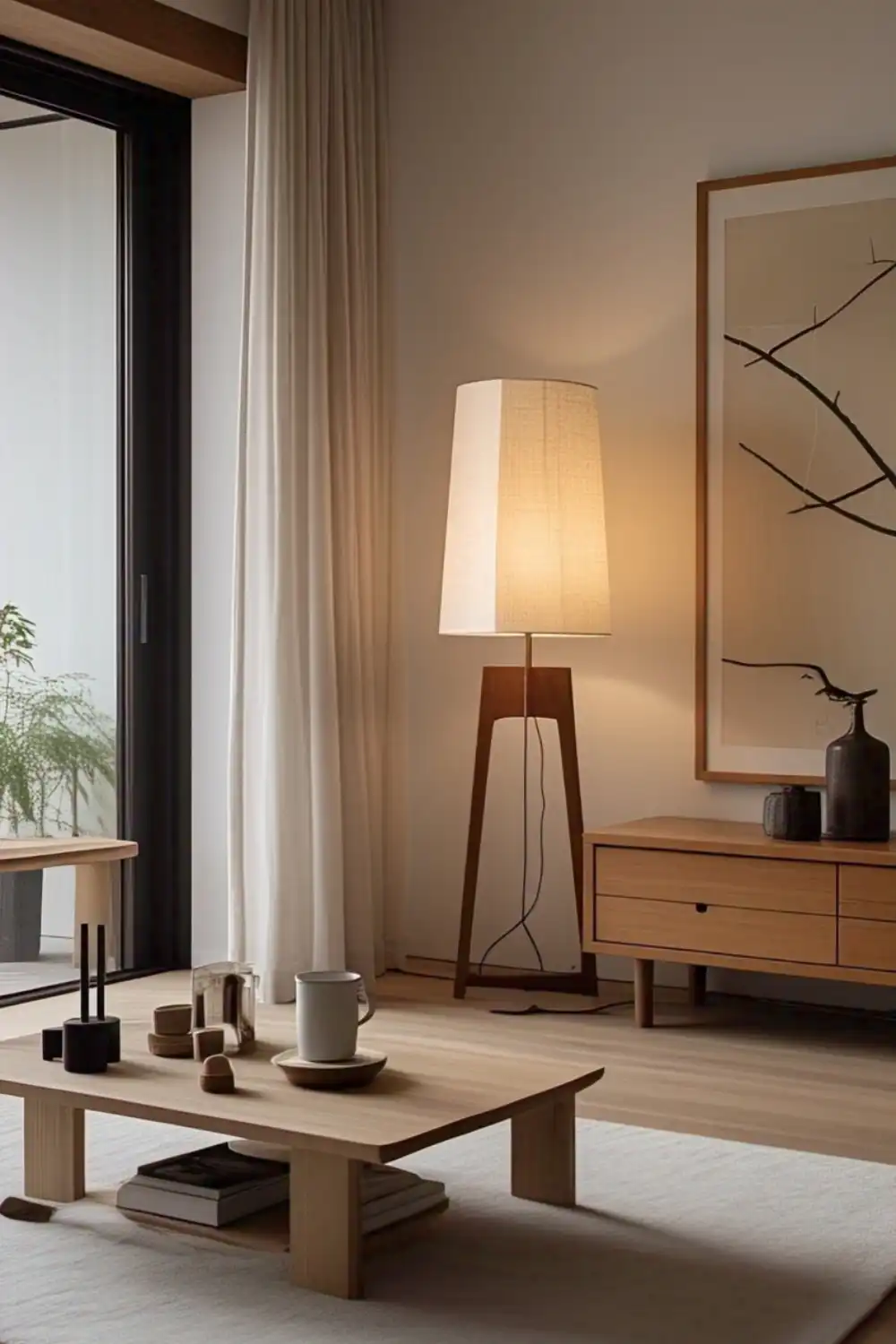
Understanding the Japandi Aesthetic
Japandi is a hybrid design philosophy that blends the best of Japanese minimalism and Scandinavian functionality. It focuses on clean lines, natural materials, and intentional living. The result is a calming space that feels warm, grounded, and free of clutter.
Core Elements of Japandi Style:
-
Neutral & earthy tones like sand, charcoal, and wood
-
Functional furniture with sleek, low profiles
-
Natural textures such as linen, rattan, and raw wood
-
Minimalist decoration, emphasizing quality over quantity
-
Balance of form and function, where every object has a purpose
In Japanese tradition, the aesthetic is inspired by wabi-sabi—the beauty of imperfection and transience. Meanwhile, Scandinavian hygge brings in warmth, comfort, and coziness.
Why Lighting Matters
In Japandi interiors, lighting isn’t just a practical feature—it’s an emotional tool. The right lighting:
-
Enhances the natural textures of your space
-
Promotes a calm and mindful atmosphere
-
Softens minimal spaces to feel more inviting
-
Complements the neutral palette with warm tones
Layered Lighting is Key
Lighting in Japandi interiors is more than just illumination—it’s atmosphere, depth, and emotion. The most stylish Japandi spaces rely on layered lighting to create warmth, softness, and subtle variation throughout the day.
Instead of a single overhead light, Japandi lighting combines three essential layers:
✨ 1. Ambient Lighting – The Soft Foundation
Ambient light sets the base mood of a room. In Japandi design, it should be:
-
Soft and diffused, not harsh
-
Spread evenly across the room
-
Often filtered through paper, linen, or frosted glass shades
Examples:
-
Ceiling fixtures with rice paper domes
-
Matte-finished pendant lights hung low over tables
-
Recessed lighting with dimmable warm bulbs
2. Task Lighting – Purposeful and Minimal
Task lighting provides function without disturbing the aesthetic calm.
Best placements:
-
Reading corners: use adjustable metal floor lamps in matte black or brass
-
Kitchens: under-cabinet LED strips with warm glow
-
Desks or consoles: ceramic or wooden table lamps
These lights offer clarity without overpowering the serenity of the space.
3. Accent Lighting – Adding Subtle Drama
Accent lighting draws attention to textures and features in a soft, intentional way.
How to use it:
-
Backlight floating shelves with warm LED strips
-
Spotlight a handcrafted ceramic vase or natural wood wall
-
Place small uplights behind plants or beside textured walls
This third layer adds visual rhythm and gently breaks monotony without visual clutter.
Pro Tip:
Use dimmer switches for all layers so you can adjust brightness and mood throughout the day. Morning coffee? Slightly brighter. Evening unwind? Go full warm and dim.
Choose Natural Materials
Japandi interiors celebrate the art of nature—raw, honest, and imperfectly beautiful. When it comes to lighting, choosing fixtures made from natural materials is essential to achieving an authentic Japandi look.
Natural elements bring warmth, texture, and grounding to minimalist spaces, softening the clean lines and neutral tones.
Best Materials for Japandi Lighting
To align with the Japandi ethos, choose lamps and lighting fixtures crafted from:
-
Wood – especially light-toned oak, ash, or unfinished pine
-
Bamboo – flexible, durable, and eco-friendly
-
Rattan – ideal for pendant shades and floor lamps
-
Linen – softens light beautifully with an organic look
-
Ceramic or clay – often handcrafted, adding a wabi-sabi touch
-
Rice paper – a classic nod to traditional Japanese lanterns
-
Frosted or milky glass – diffuses light gently and minimally
Each of these materials adds a sense of calm and tactility, reinforcing the Japandi principles of harmony and intentionality.
Why Natural Materials Matter
-
They diffuse light softly, avoiding harsh glare
-
They add organic texture without visual noise
-
They support sustainable design practices
-
They visually connect the interior to nature, a core Japandi value
Example Combinations
-
A bamboo pendant lamp above a linen-covered sofa
-
A ceramic table lamp with a hand-thrown base on a wooden console
-
A rice paper lantern beside a floor-level futon or low bed
-
A woven rattan shade over a Japandi-style reading nook
These combinations not only complement your décor—they become part of the story your home tells.
Embrace Warm Light Temperatures
In Japandi interiors, lighting isn’t just about visibility—it’s about feeling. And the quickest way to shift the mood of a room is through color temperature.
Japandi design leans heavily into warm light temperatures—think golden sunsets, soft candlelight, and the glow of a cozy café. These tones help create a tranquil, welcoming atmosphere that supports rest, focus, and mindful living.
What Is Warm Lighting?
Light temperature is measured in Kelvin (K). Here’s what works best for Japandi:
-
2700K to 3000K → Warm white, perfect for living rooms, bedrooms, and relaxation spaces
-
Below 2700K → Very warm, with amber tones reminiscent of traditional Japanese lanterns
Avoid using cold, blue-toned lighting (5000K and above), as it clashes with Japandi’s organic softness and can feel sterile or harsh.
☀️ Where to Use Warm Lighting
-
Living Room: Use soft-glow lamps with linen or paper shades
-
Bedroom: Try dimmable bedside sconces in warm white
-
Dining Area: Hang a rattan or bamboo pendant with warm Edison bulbs
-
Entryways: Set the tone with a ceramic wall light in 2700K
These areas benefit from a calm ambiance that warm lighting naturally provides.
✨ Smart Warmth Tips
-
Use warm LED bulbs labeled “soft white”
-
Layer light sources at different heights—floor lamps, table lamps, and sconces
-
Add dimmers to shift the tone from day to evening seamlessly
-
Mix task lighting with ambient glow for balanced visual comfort
Keep Lighting Fixtures Minimal
One of the golden rules of Japandi design is simplicity with purpose—and this applies especially to lighting. In Japandi interiors, lighting fixtures aren’t meant to dominate the space. They should blend harmoniously with the environment, offering function, warmth, and aesthetic subtlety.
️ Minimal Doesn’t Mean Boring
Minimal lighting in Japandi style still embraces character. But instead of bold, industrial statements, look for:
-
Streamlined silhouettes
-
Matte finishes in black, white, or earth tones
-
Soft, organic shapes that feel handcrafted
-
Fixtures that visually “disappear” into the space
These elements enhance the space without drawing too much attention to themselves.
Ideal Japandi Lighting Fixtures
-
Slim pendant lights with linen or bamboo shades
-
Wall sconces with ceramic finishes and simple contours
-
Floor lamps with narrow, natural wood stands
-
Table lamps with clean, rounded bases in neutral tones
-
Paper lanterns that float softly in a room like gentle sculptures
When in doubt, choose function-first forms that offer soft lighting without clutter.
What to Avoid
-
Oversized chandeliers
-
Glossy chrome or mirrored finishes
-
Busy or ornate metalwork
-
Industrial or steampunk-style lights
-
Trendy sculptural fixtures that overpower minimal spaces
Japandi style thrives on quiet elegance. If your lighting feels loud, it likely doesn’t belong.
Color Palette Tip
Stick with muted tones like ivory, clay, graphite, sand, and oak. These colors maintain visual calm and coordinate effortlessly with other Japandi elements like natural wood furniture or stone flooring.
Use Floor and Table Lamps for Cozy Corners
In Japandi design, every corner of your home has the potential to become a moment of calm. And one of the easiest ways to create that serene atmosphere is by using floor and table lamps strategically. These lights don’t just illuminate—they anchor a space emotionally, offering warmth, softness, and purpose.
️ Create Intentional Spaces
Japandi living is all about intentionality. A single lamp placed beside a chair or console can:
-
Encourage mindful reading or journaling
-
Add depth to a neutral room
-
Highlight beautiful natural textures
-
Transform unused corners into calming nooks
The goal isn’t to fill space—it’s to invite stillness.
Japandi-Approved Lamp Styles
Look for floor and table lamps that reflect Japandi values:
-
Natural wood bases – slim, sculptural, and grounded
-
Linen or rice paper shades – soft light diffusion, textural warmth
-
Neutral tones – like sand, bone, charcoal, or clay
-
Handcrafted ceramic bases – embracing wabi-sabi aesthetics
-
Slim metal details in matte black or brushed brass
Avoid overly industrial, glossy, or bulky designs. Keep things light and balanced.
Styling Ideas for Cozy Corners
-
Reading Nook: Pair a wooden floor lamp with a linen armchair and a stack of neutral-toned books. Add a small plant for organic softness.
-
Bedroom Corner: A ceramic table lamp on a low-profile bedside table next to a neutral futon or bedding.
-
Hallway Glow: Slim table lamp on a floating shelf or console for subtle ambient light.
-
Living Room Accent: Rattan floor lamp in a bare corner with a tatami mat or pouf for grounding.
Practical Tips
-
Choose warm light bulbs (2700K or below) for cozy ambiance
-
Place lamps near reflective natural materials like wood or plaster to spread the glow
-
Keep cords hidden or minimal for visual clarity
-
Layer with other lighting (pendants or sconces) for dynamic depth
Harness Natural Light First
Before you even switch on a lamp, Japandi design asks you to look outside.
Natural light is the soul of Japandi interiors. It creates balance, highlights texture, and changes gently throughout the day—just like the moods of a calm, mindful life. In Japandi philosophy, the best lighting starts with what’s already present: sunlight.
☀️ Let the Light In
Japandi homes are designed to embrace natural light and guide it gently through the space.
Here’s how:
-
Use sheer curtains in linen or cotton to filter light softly
-
Choose large, unblocked windows where possible
-
Paint walls in warm neutrals (like sand, mushroom, or pale gray) to reflect light beautifully
-
Use low furniture to keep sightlines open and allow light to travel
-
Place mirrors opposite windows to amplify brightness without adding artificial sources
Natural light becomes your first lighting layer, setting the tone for all others.
Frame the View
In Japandi spaces, windows aren’t just for light—they’re for framing nature. Whether it’s a tree branch, the sky, or falling rain, allow views to be part of the interior design.
-
Keep window sills minimal and clutter-free
-
Frame windows with organic materials like wood or woven blinds
-
Avoid heavy drapes or blackout curtains in main living areas
This approach blurs the line between interior calm and outdoor beauty.
Light and Shadow in Harmony
One of the most beautiful aspects of Japandi lighting is the play between light and shadow.
-
Highlight the way morning light hits a wood grain table
-
Allow shadows from slatted blinds or bamboo screens to dance on white walls
-
Embrace the impermanence of natural light, rather than chasing perfection
These small, everyday moments add soul and movement to an otherwise still interior.
Think Low and Soft
In Japandi design, the principles of simplicity and serenity guide the entire space—lighting included. To create a calm and cohesive atmosphere, think low and soft when choosing your lighting fixtures. This approach is key to achieving the understated elegance that defines Japandi interiors.
Soft Lighting for Peaceful Spaces
Harsh, overhead lighting can disrupt the calm flow of a Japandi room. Instead, opt for soft lighting sources that are placed low in the space, gently diffusing light to create a warm, welcoming glow. This ensures that the lighting feels as natural and grounded as the materials surrounding it.
Why Low and Soft Works:
-
It avoids sharp contrasts between dark and light, fostering a more relaxed environment
-
It encourages a gentle, soothing atmosphere
-
It works harmoniously with other elements like natural textures, wood tones, and neutral colors
-
It’s perfect for relaxation zones like living rooms and bedrooms
️ Low Fixtures and Soft Glows
Consider placing fixtures at lower levels to encourage a sense of intimacy and comfort. These can include:
-
Floor lamps with soft linen or rice paper shades placed beside seating areas
-
Table lamps with ceramic bases or wooden structures placed low on consoles or side tables
-
Pendant lights that hang low over a table or reading nook, casting a soft, warm glow
Key Tip: Look for adjustable height fixtures to control light levels and direct the glow exactly where you need it.
Integrating Natural Softness
Japandi design emphasizes natural, organic beauty. To keep your lighting soft and harmonious with the surrounding decor, choose materials that soften light naturally.
-
Rice paper or linen shades diffuse light beautifully, creating a calm and peaceful environment
-
Wooden lamp bases provide warmth and texture, balancing soft light with natural elements
-
Ceramic or clay lamps exude a sense of timelessness, perfect for adding a subtle, handcrafted touch
These materials ensure that light doesn’t overpower the space, but instead flows gently throughout.
Opt for Handmade or Artisan Fixtures
In the world of Japandi design, craftsmanship plays a crucial role in creating interiors that feel authentic, purposeful, and timeless. When it comes to lighting, handmade and artisan fixtures are the perfect fit, offering not just beauty but also a connection to traditional craft and slow design. These fixtures reflect Japandi’s core values of simplicity, quality, and imperfection.
Why Handmade?
Handmade fixtures embody the spirit of wabi-sabi—the Japanese aesthetic that celebrates the beauty of imperfection and the passage of time. Each handmade lamp or light fixture has its own story, offering a unique, personal touch to your space. Unlike mass-produced items, artisan lights bring a sense of soul and intentionality into the home, adding depth and warmth.
-
One-of-a-kind designs that reflect the artist’s vision and technique
-
Materials like hand-thrown ceramics, woven rattan, and handcrafted wood that feel natural and grounded
-
Craftsmanship that supports sustainable, slow design practices
Choosing artisan lighting isn’t just about aesthetics—it’s about honoring the craft and the maker behind each piece.
Types of Artisan Fixtures to Consider
-
Handcrafted ceramic or clay table lamps that add texture and subtle elegance to a console or bedside table
-
Rattan or bamboo pendant lights with organic, woven patterns, perfect for casting soft shadows
-
Hand-poured concrete lamps for a minimalist, industrial touch that still feels grounded in nature
-
Woven rice paper lanterns, gently diffusing light to create a soft, cozy atmosphere
-
Wooden light fixtures, such as low-hanging pendants or standing lamps made from reclaimed wood
These fixtures not only contribute to the aesthetic but also imprint character on your Japandi space, making it feel more personal and connected to nature.
The Environmental Impact
Handmade lighting fixtures often come with eco-friendly benefits. By supporting local artisans and small-scale makers, you are contributing to sustainable production practices and reducing the carbon footprint associated with mass production. Many artisan products use locally sourced materials and natural, non-toxic finishes, making them a great fit for a Japandi home that values eco-conscious living.
✨ Where to Place Handmade Fixtures
-
Dining Area: A large, woven pendant light over the table can serve as both a functional light source and a stunning piece of art
-
Living Room: A handcrafted floor lamp with a wooden base can bring warmth to a minimalist corner
-
Bedroom: A ceramic table lamp on a nightstand or a low pendant light above the bed for a soft, restful glow
-
Entryway: A handwoven rattan sconce can provide a welcoming glow while staying true to Japandi’s organic charm
Don’t Forget Outdoor Japandi Lighting
Japandi design isn’t limited to the indoors—it extends to every corner of your home, including the outdoor spaces. While the interior of your home benefits from soft, natural light, your outdoor areas deserve the same careful consideration. Outdoor Japandi lighting can enhance the serenity and organic beauty of your garden, patio, or balcony, creating a seamless transition between your interior and exterior spaces.
Create an Inviting Outdoor Atmosphere
Outdoor lighting in Japandi design should never overwhelm the natural surroundings. Instead, it should gently complement the natural materials and soft lines typical of Japandi style. Whether you’re illuminating a garden path or highlighting architectural features, the key is to maintain a sense of calm and balance.
Think about using lights that mimic the tranquility and simplicity of nature, such as those that cast soft, ambient glows over greenery and stone.
️ Ideal Outdoor Japandi Lighting Options
-
Bamboo lanterns or paper lanterns for a warm, inviting glow
-
Stone or concrete lamps that blend naturally with garden elements
-
Low-profile, solar-powered lights to softly illuminate garden paths or the edges of patios
-
Caged wire pendant lights for outdoor dining areas or balconies
-
Wooden or rattan sconces mounted along fences or garden walls for a rustic touch
These fixtures provide both beauty and functionality while maintaining the minimalistic feel essential to Japandi interiors.
Outdoor Lighting Placement Tips
-
Highlight plants and greenery: Position outdoor lamps near trees, shrubs, or garden beds to cast dramatic shadows and bring focus to the beauty of nature
-
Illuminate pathways: Low, soft lights along garden paths or steps can create a cozy, welcoming atmosphere while providing safe navigation
-
Accent architectural features: Use subtle lighting to highlight outdoor seating areas, pergolas, or structures without overpowering the natural beauty of your surroundings
Maintain Natural Elegance
Even in outdoor spaces, the Japandi principle of natural materials reigns supreme. Look for lighting fixtures that incorporate earthy, sustainable materials like wood, bamboo, and stone. These materials tie your outdoor and indoor environments together, ensuring a consistent, harmonious flow between the two.
-
Weathered wood lanterns or stone-based lights that age beautifully over time
-
Rustic woven wicker lanterns or cotton shade lights that feel grounded in nature
-
Candlelit lanterns or tea lights for a soft, intimate glow
Use Color Temperature to Zone Your Spaces
In Japandi design, lighting does more than just illuminate—it helps define zones, guiding the flow and energy of a space. Color temperature—the warmth or coolness of a light—plays a crucial role in this. By strategically choosing light sources with different color temperatures, you can zone your spaces and create specific moods throughout your home.
️ What is Color Temperature?
Color temperature refers to the warmth or coolness of light, measured in Kelvins (K). It ranges from warm yellow light (lower Kelvins) to cool blue light (higher Kelvins).
-
Warm light (2700K–3000K) creates a cozy, intimate ambiance, perfect for living rooms and bedrooms.
-
Neutral light (3500K–4000K) is balanced and works well in kitchens, bathrooms, or workspaces.
-
Cool light (5000K–6500K) is bright and energetic, suitable for task lighting or areas where you need clarity, such as home offices or bathrooms.
By using color temperature intentionally, you can create functional zones while still maintaining the harmony and tranquility characteristic of Japandi design.
️ Warm Light for Relaxing Zones
Start by layering warm light in spaces meant for relaxation and unwinding. Soft, warm white light can help you create a comfortable, serene atmosphere.
-
In the living room, opt for warm table lamps and floor lamps that provide soft illumination. These can be paired with dimmer switches for control over light levels.
-
For the bedroom, use warm, ambient lighting around the bed area. A warm-colored pendant light or ceramic lamp will create a cozy cocoon of light, perfect for winding down after a long day.
️ Neutral Light for Functional Spaces
In spaces where you perform activities like cooking or working, neutral light (3500K–4000K) is ideal. This type of lighting helps you stay alert and focused while maintaining a clean, minimal look.
-
The kitchen benefits from neutral white light that’s bright enough for cooking, without being too harsh. Pendant lights or under-cabinet lighting with this color temperature can illuminate workspaces without creating harsh shadows.
-
The home office or reading nook will feel energized with a neutral light source, ensuring clarity without overwhelming the senses.
Cool Light for Task Zones
For specific tasks that require precision and focus, such as reading, studying, or applying makeup, cool light (5000K–6500K) works best. It mimics daylight, providing clarity without straining your eyes.
-
Use cool white lighting in the bathroom for grooming or applying makeup. A well-placed, cool light vanity light can provide bright, even illumination.
-
The home office also benefits from cool lighting to keep you focused and alert. Choose task lamps or overhead lights with a cooler color temperature to illuminate your desk.
Highlight Japandi Textures with Directional Light
In Japandi design, texture plays a pivotal role in creating a warm, inviting atmosphere. The natural materials—like wood, stone, ceramics, and woven textiles—used in Japandi interiors are rich with depth and character. The right lighting can enhance these textures, bringing out their beauty and subtle details. Directional lighting is one of the most effective ways to highlight and celebrate these textures.
What is Directional Lighting?
Directional lighting refers to light that is focused in a specific direction, rather than diffused across the entire space. This type of lighting is perfect for accentuating certain elements of your decor, such as textures, artwork, or architectural features. It’s often achieved through spotlights, track lighting, wall-mounted fixtures, or pendant lights.
In Japandi spaces, directional lighting can be used to highlight the natural textures of materials while maintaining a minimalist, tranquil atmosphere.
Enhance Natural Materials with Focused Light
Japandi design is all about natural beauty, and directional lighting can help emphasize this by casting light on the materials that make the space feel grounded and serene.
-
Wood: Use spotlights or wall-mounted lights to shine gently on wooden surfaces, such as exposed beams, flooring, or furniture. The light will accentuate the natural grain of the wood, highlighting its warmth and texture.
-
Stone: Directing light onto stone walls or countertops brings out their raw, earthy texture, creating dramatic shadows and a sense of depth. Consider pendant lights or track lighting to illuminate stone features.
-
Ceramics: For ceramic items like vases, bowls, or lamps, use small directional lamps to spotlight their delicate shapes and intricate glazes. This adds interest without overpowering the simplicity of Japandi decor.
-
Textiles: If you have woven textiles like rugs, curtains, or cushions, directional lighting can create shadows that highlight the texture of the fabric, giving it an organic, tactile feel.
️ How to Use Directional Light in Different Spaces
-
Living Room: Position spotlights or wall sconces above or beside pieces of furniture made from natural materials, like wooden coffee tables or ceramic lamps. This draws attention to the texture while maintaining the simplicity of the design.
-
Bedroom: Place a directional light above a woven rattan chair or a textured textile like a linen bedspread. The soft shadows will create a cozy, intimate vibe while highlighting the beauty of these natural materials.
-
Dining Area: Use pendant lights or track lighting to focus on the table or serving area, particularly if the surface is made from stone, wood, or ceramic. The directional light will bring out the details of these materials while enhancing the space’s warmth.
Soft Shadows and Texture Play
In Japandi spaces, soft shadows are just as important as the light itself. Directional lighting can create gentle contrasts between light and dark, giving texture its moment to shine. The interplay of light and shadow is especially important in spaces with minimal decor—it’s what adds interest and dimension to otherwise simple, quiet designs.
-
Textured wall features, such as woven bamboo or linen panels, can look stunning when lit from the side. The angled light will cast soft shadows across the textures, creating a sense of movement in the space.
-
Ceramic lamps can be illuminated from below to create a subtle glow that highlights their curves and glazes, emphasizing the artisanal quality of the piece.
Common Mistakes to Avoid in Japandi Lighting
Lighting is one of the most important elements in creating a Japandi-inspired space, as it sets the mood and enhances the tranquil, minimalist atmosphere. However, getting the lighting wrong can easily disrupt the balance and flow of your space. To help you avoid common pitfalls, here are some lighting mistakes you should steer clear of when designing your Japandi home.
Overusing Bright, Harsh Lighting
One of the biggest mistakes you can make in a Japandi interior is using lighting that’s too bright or harsh. Japandi design thrives on soft, ambient light that creates a sense of calm and relaxation. Harsh lighting—especially bright, cool-toned lights—can feel jarring and disrupt the peaceful atmosphere that defines the style.
What to do instead:
-
Opt for warm-toned lighting in the 2700K–3000K range to create a soft, inviting glow.
-
Use dimmers so you can adjust the light intensity to suit the mood of the room.
-
Layer lighting using ambient, task, and accent lights to create a balanced, gentle illumination.
Ignoring Natural Light
Natural light is a key element in Japandi design. It not only brings warmth and energy into the space but also connects your indoor environment with the outdoors. Many people make the mistake of relying too heavily on artificial lighting without considering how to optimize the natural light available.
What to do instead:
-
Make the most of large windows or skylights to let in as much natural light as possible.
-
Use sheer curtains or blinds to filter light and control the brightness, maintaining a soft, diffused glow.
-
Reflect light using mirrors or light-colored furniture to bounce natural light deeper into the room.
Forgetting About Layered Lighting
In Japandi interiors, lighting is more than just one type of fixture. A common mistake is relying solely on overhead lights or wall lights, which can create an even but uninspiring glow. Layered lighting, which includes ambient, task, and accent lights, is crucial to creating depth, warmth, and visual interest.
What to do instead:
-
Combine floor lamps, table lamps, and pendant lights with wall sconces and recessed lighting.
-
Place accent lights on textured surfaces, such as wood or stone, to highlight their natural beauty.
-
Use task lights for specific activities like reading or cooking, while keeping the overall ambiance warm and calm.
Using the Wrong Light Fixtures for the Space
Another common mistake is using light fixtures that are too large or too ornate for a Japandi-style space. Japandi design leans toward simplicity, and choosing minimalist, low-profile light fixtures is key. Oversized or overly decorative lighting can easily overwhelm the space and disrupt the aesthetic.
What to do instead:
-
Choose simple, elegant fixtures that blend seamlessly into the environment.
-
Opt for materials like wood, ceramics, and metal for a more natural, understated look.
-
Keep fixtures low-profile, especially in smaller spaces, so they don’t overpower the room.
Forgetting to Consider the Mood
Every room in your home has a different purpose, and lighting should reflect that. A mistake many people make is treating all lighting the same, without considering how different lighting can influence the mood and function of each space.
What to do instead:
-
Use warm, cozy lighting in the living room and bedroom for a relaxing atmosphere.
-
In workspaces or kitchens, opt for neutral or cooler lighting to keep you focused and alert.
-
In dining areas, use dim, soft lighting that creates a warm, intimate ambiance for meals.
Overcomplicating the Lighting Scheme
Simplicity is one of the cornerstones of Japandi design, and this should extend to your lighting scheme. Using too many different types of lighting or mixing too many materials and styles can make the space feel cluttered and chaotic.
What to do instead:
-
Stick to a unified lighting scheme that complements the rest of your decor.
-
Limit the number of different light fixtures and keep them consistent in terms of style, material, and color.
-
Focus on quality over quantity—one beautifully placed fixture is often more effective than multiple competing lights.
Pinterest-Worthy Japandi Lighting Combos
Creating the perfect lighting for your Japandi-inspired space is not just about choosing the right fixtures—it’s about blending different types of lighting to create balance, enhance natural materials, and set the right mood for each area. Here are some Pinterest-worthy Japandi lighting combos that will elevate your space, adding warmth, texture, and visual appeal.
✨ Soft Ambient Lighting + Minimalist Pendants
One of the most timeless and effective lighting combos in Japandi design is soft ambient lighting combined with minimalist pendant lights. This combo creates a serene and inviting atmosphere while adding a touch of modern elegance.
-
Ambient Lighting: Use recessed lighting or hidden LED strips to create a soft, diffused glow that illuminates the room without being too harsh.
-
Pendant Lights: A single, simple pendant light with a ceramic or wooden shade can serve as a focal point in the room. Hang it over a dining table, coffee table, or kitchen island to add visual interest while keeping the overall feel of the space minimalist.
Pinterest Tip: Capture images that show how the soft glow of ambient light blends seamlessly with the focused warmth of a pendant light. Use captions like “Soft Lighting and Minimalist Pendants: The Perfect Japandi Combo.”
️ Wall Sconces + Table Lamps for Layered Lighting
Layered lighting is essential to achieving that calm, balanced Japandi aesthetic, and the combination of wall sconces and table lamps is perfect for creating a multidimensional ambiance.
-
Wall Sconces: Position low-profile wall sconces with warm-toned bulbs on either side of a bed, sofa, or artwork. They provide ambient light while adding subtle design elements.
-
Table Lamps: Add textured ceramic or wood table lamps on side tables to introduce both lighting and decor. The warmth of the light will bring out the details of the natural materials.
Pinterest Tip: Show a cozy bedroom or living room scene with wall sconces and table lamps working together. Use captions like “Layered Lighting for Ultimate Japandi Comfort.”
Spotlights on Textures + Soft Recessed Lighting
Highlight the natural materials in your home with the combination of directed spotlights and soft recessed lighting. This dynamic duo helps accentuate the texture of materials like wood, stone, and ceramics, while maintaining a calm, warm ambiance.
-
Spotlights on Textures: Use adjustable spotlights to highlight wooden furniture, stone walls, or ceramic vases. The focused light will bring out the texture and depth of these materials.
-
Soft Recessed Lighting: Install recessed lights in the ceiling to provide ambient light that complements the spotlights, offering a more even light distribution throughout the room.
Pinterest Tip: Capture a close-up shot of a wooden table or stone wall with a spotlight accentuating the texture, paired with the soft glow of recessed lighting. Use captions like “Highlighting Textures: The Japandi Lighting Combo You Need.”
️ Soft Overhead Lighting + Floor Lamps for Cozy Corners
For a relaxing bedroom or living room, the combination of soft overhead lighting and floor lamps creates the ideal cozy atmosphere. This combo provides ambient light while still offering the flexibility to create intimate, low-lit corners.
-
Soft Overhead Lighting: Choose a flush-mount ceiling fixture with a warm, soft light to provide general illumination without overpowering the space.
-
Floor Lamps: Place a minimalist floor lamp in a cozy corner to create a sense of warmth and intimacy. Look for wooden or metallic finishes that blend seamlessly with the Japandi style.
Pinterest Tip: Photograph a cozy reading nook or bedroom with the soft glow of overhead lighting and a floor lamp in the corner. Use captions like “Creating Cozy Corners with Japandi Lighting.”
Natural Light + Simple Wall Fixtures
Japandi design emphasizes the importance of natural light, and when paired with simple wall fixtures, you can create a peaceful, well-lit space that feels grounded and serene.
-
Natural Light: Maximize large windows or skylights to allow plenty of natural light into the space. Consider using sheer curtains to filter the sunlight gently.
-
Simple Wall Fixtures: Pair the natural light with wall-mounted sconces or picture lights to highlight artwork or textured walls. Keep the fixtures simple, made from wood, ceramic, or metal.
Pinterest Tip: Capture an image of a room flooded with natural light, accentuated by a wall fixture. Use captions like “Maximizing Natural Light with Japandi-Inspired Fixtures.”
️ Task Lighting + Ambient Lighting for Dining Spaces
When it comes to dining areas, the combination of task lighting and ambient lighting will ensure the space is functional, welcoming, and visually appealing.
-
Task Lighting: Use pendant lights or adjustable sconces over the dining table. This provides ample light for eating, socializing, or working.
-
Ambient Lighting: Pair task lighting with soft, indirect ambient lighting from recessed lights or hidden LED strips along the perimeter of the room.
Pinterest Tip: Photograph a beautifully lit dining table with a pendant light above it, complemented by soft ambient lighting in the background. Use captions like “Dining in Style: Japandi Lighting Combos for Your Table.”
⚠️ What to Avoid
-
Too many contrasting light sources: Keep lighting fixtures in the same style or complementary materials to maintain a cohesive Japandi look.
-
Overcomplicated lighting schemes: Stick to simplicity and choose a few well-placed lighting pieces to avoid clutter and visual chaos.
-
Harsh, cool-toned lighting: Stick with warm lighting that enhances the natural materials and creates the calm, serene environment that Japandi design is known for.
By combining these lighting elements, you can achieve Pinterest-worthy Japandi lighting combos that elevate the aesthetic of your home while maintaining the simple, natural, and tranquil qualities of Japandi design.
Light Up Your Japandi Dream Home
Japandi lighting is all about balance. It doesn’t scream for attention—it whispers serenity. Whether you’re redesigning an entire room or just updating a few fixtures, thoughtful lighting can drastically elevate your Japandi interior. Use natural materials, warm tones, and layered lights to create a stylish, comforting sanctuary that honors both simplicity and soul.
Ready to light your space the Japandi way? Let your lighting tell a calm, quiet, and beautiful story.
Follow DIY Home Decor on Pinterest for more home design tips and inspiration.


